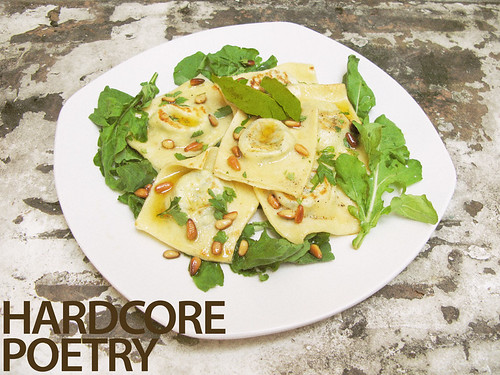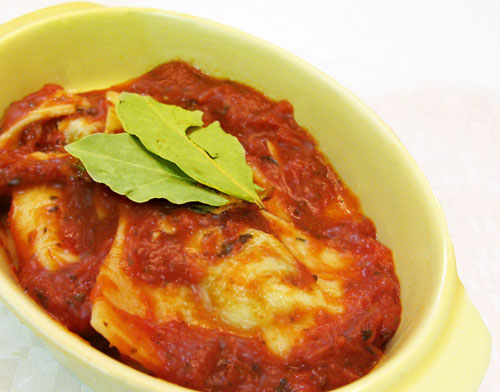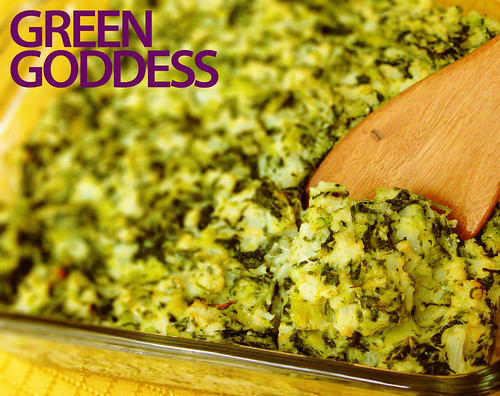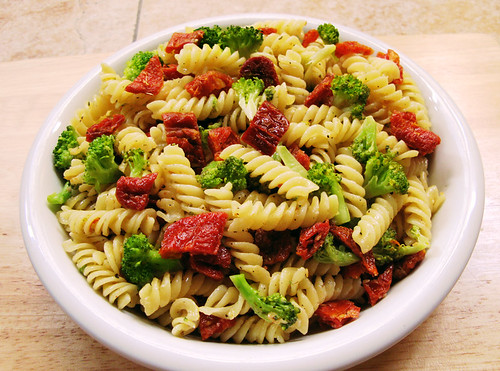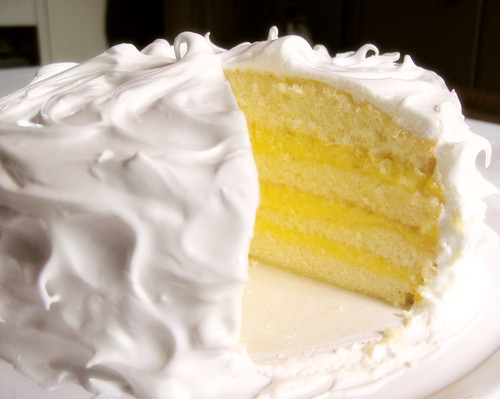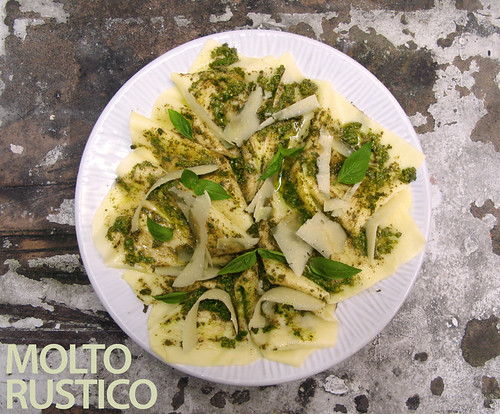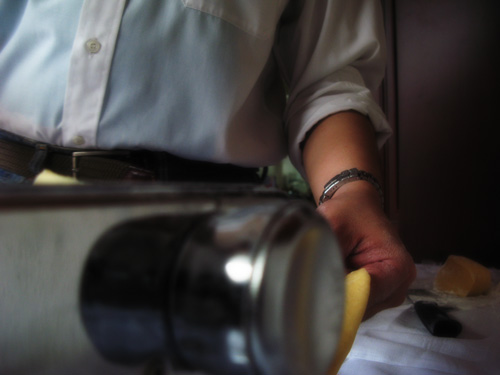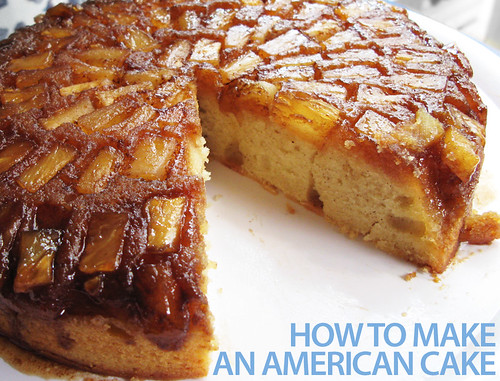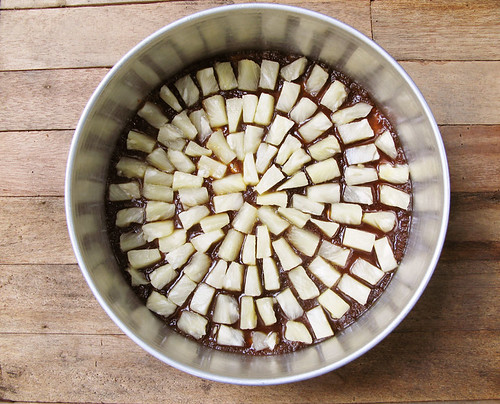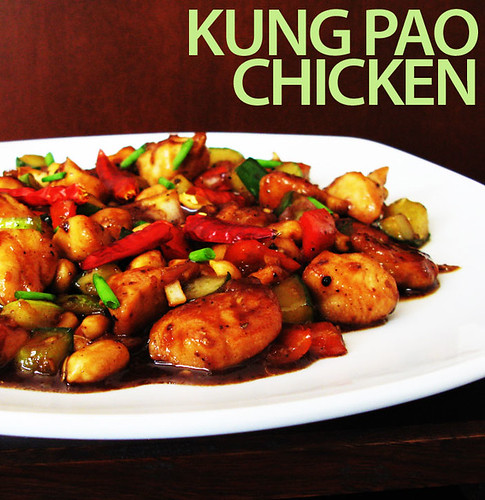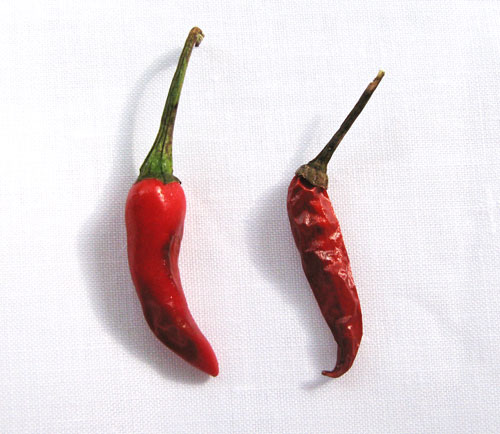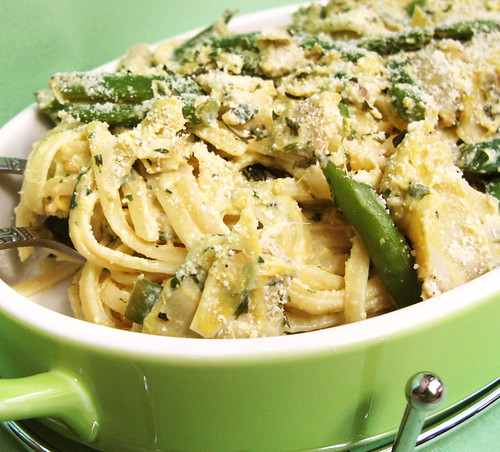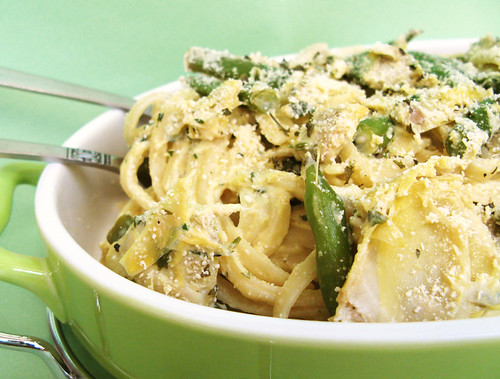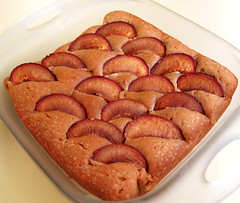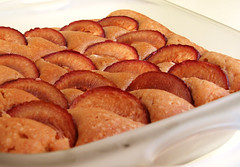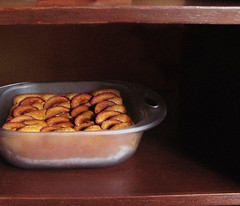Banoffee Pie
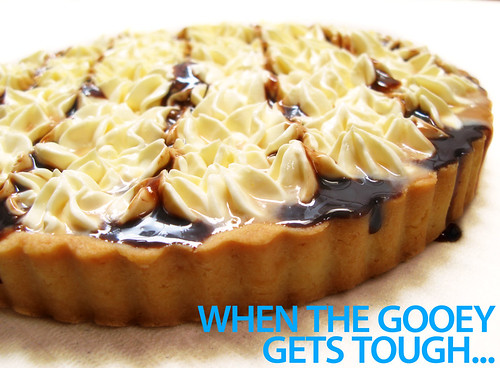
I'm just teasing here (obviously), but the British are CRAZY. While I believe that the old cliché that British food is bland is an untrue one, I have the suspicion that some of their desserts (namely: Sticky Pudding, Millionaire's Shortbread, and now Banoffee Pie) were created to compensate for a dissatisfied taste bud. I don't know! It was the seventies! Who knows how bland food was back then (uh... people older than 30?)! But here we are now in the Philippines, where bananas rule. It would be a shame not to try it. I took a cue from Jamie Oliver's book Jamie's Kitchen which I got on sale (again).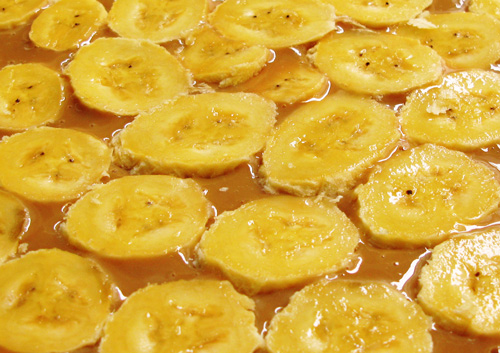
Jamie's Kitchen was a documentary/ reality series where Oliver took 15 unemployed and underprivileged youngsters under his wing and trained them as chefs for his then-new restaurant, "15". I caught a glimpse of it on the Lifestyle network and though I had to read magazines during it to keep from sleeping, there was an awesome moment which I have to now share. You see, Oliver sent his protegées to a tavern to prepare for the hard life of, er, employment in a kitchen. Unfortunately, two of the girls had gotten used to their lazy ways and their disdain for work was seen in the shoddy food and their tardiness. So when it was time for the owner of the place to say goodbye to them and send them to Jamie's for good, she was kissing their cheeks and basically, kindly, cheerfully, and awesomely telling them that they were no good in the kitchen and she doesn't see it happening for them. Quite honestly she said that what they experienced under the scrutiny of TV production wasn't real-- work is not a triumph a week, goal done, NEXT! kind of affair. It's a long, continuous, utterly same-y process of making your way to the top (and probably this blog author's greatest complaint about his impending "life"). When it was time to say goodbye to their experienced co-workers, they exchanged kisses and the lazy girls were crying too, and the guy amusedly exclaims to the camera, "Tears!" Awesome, non-sentimental jolly guy. (Recipe follows)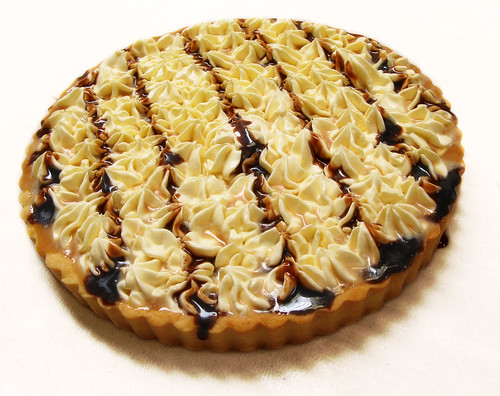
Dulce de leche, which is the "toffee" in this recipe, is an Argentinian invention, I believe, though true cajetas is made by slowly cooking goat's milk in massive amounts of sugar. Regardless, this is how Latina grandmothers roll nowadays, so don't be ashamed. It's supposed to be thick and when chilled, barely move, but condensed milk differs and while mine was gloriously rich and thick, bananas can still sink in them and you will get a flood of dulce de leche everywhere. So I've deviated from my procedure here.
Making dulce de leche
You'll need 3 300-mL or 2 14-oz (400mL) cans of condensed milk (there are differences in the available can sizes between countries, weirdly). In a large pot, lay the cans down and add enough water so that the cans are completely submerged. If they float, you'll have to weigh them down with a brick or something. Bring the water to a boil over medium heat and keep boiling for 3 hours. Always make sure to keep the cans submerged, so have some extra water nearby always. If you let it dry up, the cans might explode and you will have dulce de ceiling, not to mention a possible injury. So if you're feeling lazy and don't want to periodically watch the cans, don't do this at all.
Alternatively, you could use a pressure cooker, which is what I did. Lay the cans down on the cooker and cover with boiling water. Ensure that the lid is shut tight and bring to a boil over high heat. Once the cooker achieves proper pressure (the indicator/ valve is whistling or turning), turn the heat down low (make sure the whistling/ turning continues) and cook under pressure for 1 hour. If the turning of the valve stops, that means there's no water left, so if you're not even close to an hour cooking, you'll have to stop and add more water. Once done, release the pressure (you know, douse the top with cool running water, release the valve, release the lid), and cool at room temperature.
The last method is via the oven. In a deep oven-safe pot, roasting pan, or dutch oven, cover the cans completely with boiling water and bake in a preheated 275°F (135°C) oven for 5 hours. You'll have to still make sure that the water doesn't dry up, but since it's a closed environment, it happens much slower if ever.
Wait till the cans are room temperature before opening, or Charles's Law will kick your ass and you'll get dulce de face.
Banoffee Pie (actually a tart)
Sift together the flour, sugar, and salt into a large bowl. Using a pastry blender or two knives, cut in the butter until the mixture resembles oatmeal (large crumbs), then cut in the egg yolk until the dough comes together into small curds.
Grease a 9-inch fluted tart pan and press the tart dough into the bottom and up the sides. Don't be too heavy-handed with the pressing-- apply only enough pressure so the dough clings together and can still crumble, but you don't want to have a hard, stony crust. Freeze for at least 30 minutes, preferably longer.
Preheat the oven to 375°F (190°C) Grease a piece of foil large enough to cover the tart and place it grease-side down on the crust. Bake in the middle rack of the oven on a sheet pan for 25 minutes, then remove the foil and bake for 8 minutes more. Set the crust aside to cool. Meanwhile, whip the cream until it forms firm peaks and set aside in the fridge.
Spread some dulce de leche on the bottom of the cooled crust, only enough to make a thin layer. Slice the bananas 1/4 inch thick and lay them out in one layers over the dulce de leche. Using the dulce de leche at room temperature, spoon it over the bananas only to fill the crevices between them, but not enough to make them float. Place another layer of banana slices over this and repeat. Place the whipped cream in a piping bag and pipe a design on the top. Alternatively you can just spoon it in and form swirls. Use the remaining dulce de leche to make a striped pattern on top, or you could do as I did and squeeze some chocolate syrup on.




